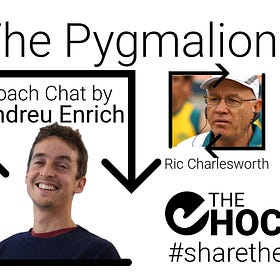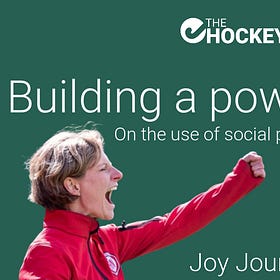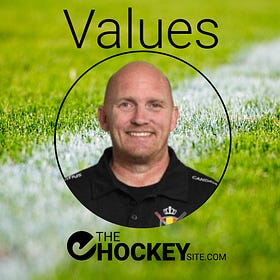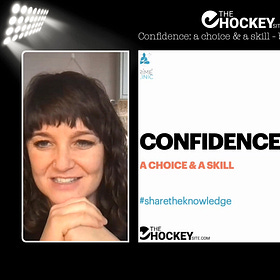Sculpt a winning mindset
From Motivation Myths to Lasting Confidence: How Top Field Hockey Coaches Sculpt Team Success
Mental coaching is now recognized as a central challenge for experienced field hockey coaches: it’s about much more than team talks and “motivational” speeches. This article dives into why changing the mindset—of individuals and whole teams—is both a science and an art, and never more critical than in the pressure-cooker moments of elite hockey. Drawing on the wisdom of leading coaches and psychologists, including Joy Jouret, Katie Warriner, Andreu Enrich, Ric Charlesworth, Adam Commens, and others, we’ll unpack key myths around confidence, the limits of the “Pygmalion effect”, and why team psychology is far more complex than a collection of individuals.
Whether you’re looking to turn your group into a cohesive “clutch” team at just the right time, struggling with stubborn confidence issues in key players, or facing the dilemma of how hard to push mindset change without overstepping ethical lines—this piece is for you. Expect fresh research, real-life field hockey examples, a clear-eyed look at what’s possible, and where even the best coaches get stuck. You’ll also find practical solutions: frameworks, tools, and habits to use every week in your coaching.
In the end, we’ll return to an ancient analogy—the sculptor and the sculpture—as a reminder that the best mental coaching is neither pure artistry nor engineering. It is the ongoing, ethical co-creation of both culture and confidence, shaped by both coach and player. Ready? Let’s chisel away.
Table of Contents
Introduction: The Sculptor and the Sculpture – An Analogy for Coaching the Mind
The Realities Behind Mental Coaching: Science, Myths, and Modern Demands
The Individual Challenge: Unlocking the Player’s Mind
The Group Dynamic: Building (and Rebuilding) the Team Mindset
The Coach’s Role: From Authority Figure to Facilitator of Change
Timing the Mindset: Helping Teams Peak at the Right Moment
Obstacles, Dilemmas, and Ethical Questions
Practical Takeaways: Tools and Habits for Coaches
Conclusion: Returning to the Analogy – The Living Sculpture
The Sculptor and the Sculpture – An Analogy for Coaching the Mind
Every field hockey coach knows the frustration of trying to carve out a new mindset in their players, only to hit the hard, unmoving marble of old habits. The challenge of mental coaching can be likened to the myth of Pygmalion, the artist who fell in love with his own sculpture, Galatea. Pygmalion saw beauty and potential in raw stone—he worked with passion and precision to create his “ideal” woman. Yet, for much of the story, Galatea remained unresponsive: a statue, shaped but not alive. Only through intervention (divine, in myth) does Galatea turn from marble into a living being, full of her own will and potential.
As Joy Jouret and Andreu Enrich both reference in their discussions, this analogy is illuminating for us as field hockey coaches. Are we artists shaping our players? Engineers tuning up a machine? Or are we—when at our best—partners in awakening something already latent in the athlete? The wish for a perfect team, perfectly executing under pressure and pliable to our designs, is as alluring as Pygmalion’s dream. But as Enrich points out, we must always be aware that our “sculptures” will, and must, come alive—sometimes defying our intentions, sometimes surprising us beyond what we could imagine.
In this article, we’ll reference this analogy throughout. Sometimes, pushing too hard to shape can “denaturalize” (to borrow Enrich’s term) what is most valuable in a player. Sometimes, failing to intervene leaves raw stone where the team needs a unified force. This tension—between shaping, supporting, and letting go—will be the through-line as we examine mindset change and mental coaching. And in the end, we’ll reflect on whether our job is to make statues, or to create the surface for human greatness to emerge.
The Realities Behind Mental Coaching: Science, Myths, and Modern Demands
The world of mental coaching is filled with seductive myths and easy soundbites, but field hockey coaches operating at a high level know reality is much messier. One enduring myth is that “some players are just confident”—as if confidence were a fixed trait, a genetic gift, or something you could pass on with a pep talk. Katie Warriner, senior performance psychologist for Team GB Hockey, busts this myth directly: “Confidence is a choice and a skill,” she argues, emphasizing that it’s something to be trained, not just felt. Warriner shares that even elite performers—Olympic athletes, world leaders, and star musicians—deal with self-doubt, and what really matters is building a habit of responding to pressure constructively, not eliminating doubt altogether.
Digging into the research, coaches must confront the nuances of team psychology as well. The Pygmalion effect, famously demonstrated in schools (where teachers’ expectations shape student performance), holds weight in sports environments, too—but only with care. As Andreu Enrich explains with reference to Robert Rosenthal’s experiments, coaches who express belief in players can, through warmer climates, deeper feedback, and more opportunities, unlock far more potential. But there is a flipside—“Golem effects” (low expectations, negative cycles) drag performance down, and unchecked optimism can fizzle into frustration if not grounded in realism. In short, psychological tools can be powerful, but they are not wands able to magically transform mindsets.
What’s more, the modern demands on hockey coaches have never been higher. Feminine or masculine confidence patterns, intergenerational differences, and the pressure-cooker of short international tournaments mean that mental skills must be honed under fire. Coaches like Adam Commens (Belgium) remind us that values-based cultures—clarifying and embedding shared attitudes—are essential for producing reproducible success. But as Joy Jouret and Ric Charlesworth both stress, there’s no “one size fits all”, and the best coaches must be part psychologist, part leader, and always a learner. In total: the science of mental coaching is a foundation, but the art comes when you translate theory to the daily ebb and flow of elite team sport.
The Individual Challenge: Unlocking the Player’s Mind
Behind every team’s collective psychology, there are stubborn, complicated individuals with histories, beliefs, and moods that don’t always yield to team talks or “positive thinking”. One common obstacle is the ingrained belief system each player brings: their family background, youth club, ego, or track record of success or failure. Coaches regularly misfire by assuming the “motivational talk” that got one player rolling will have the same effect on another. “Role model yourself—where do YOU get your confidence from?” Katie Warriner asks, urging coaches to both examine their own sources and help players list and own theirs. Coaches using tools like MBTI or DISC profiling (as advocated by Jouret and Commens) are better equipped to see which players need direct feedback, which need a listening ear, and which want just to be told “what to do”.
This challenge scales up in moments of pressure. You know the player: superb skills in practice, but shrinks when the stadium throbs and medals are at stake. Warriner’s advice is clear: help players build a “yes I can” mindset, but don’t mistake this for simple bravado. Success should not only be defined in outcomes (goals, wins) but also in controllable behaviours (executing a role, committing to the process, rebounding from errors). When confidence is rooted only in “results”, it shatters easily. Instead, using routines, imagery, and tangible feedback, coaches can shift focus to “what is in my control?”, letting players experience mastery and agency where it counts.
Yet, even with this support, the coach must be an ethical sculptor. Jouret and Enrich both emphasize respecting individuality, and warn against pushing players toward mindsets that contradict their values or sense of self. As the Galatea analogy teaches, the “best” sculpture is not always the one most like the sculptor’s vision—it is the one that comes alive, grows in its own direction, and flourishes according to its own potential. The master coach knows where to influence, and where to let be, supporting each unique person within the team.
The Group Dynamic: Building (and Rebuilding) the Team Mindset
If working with individuals is an art, forging a true team mindset is orchestral work—developing harmony from many voices, often in tension. Joy Jouret, drawing from social psychology, reminds us that real “groups” have specific traits: consistent interactions (both emotional and task-oriented), a clear common goal, interdependence, explicit structures (roles, norms, relationships), and cohesion. Coaches often overlook the difference between a collection of individuals and a united “team”—and the cracks often emerge when adversity hits or cliques form.
Addressing these group dynamics requires proactive design. Jouret and Enrich stress the importance of both internal cohesion (the “glue” that holds a squad together) and external identity (what others see as a team’s unity). Team rituals, shared clothing, symbols, and small-group work aren’t window dressing—they are culture builders that encourage buy-in and mutual support. But challenges abound: the risk of subgroups (“cabals”, to use Peter from Nigeria’s question), unintegrated juniors, or over-reliance on a “bad influence” captain. Coaches must both identify and actively shape these informal currents using methods like facilitated small group sessions, structured initiation rituals, and open discussion settings to break down barriers and build trust.
Even then, change is rarely linear. Teams fracture under pressure, lose confidence in each other, or suffer from “social loafing” (relying on others to pick up the slack). Warriner highlights the importance of creating clear, visible mechanisms for accountability and recognition—personal data (fitness trackers, GPS, feedback loops), public recognition of effort, and regular honest discussions. As coaches like Ric Charlesworth advise, it’s vital to recognize the shifting life of a team—with moments to “comfort the troubled and trouble the comfortable”—and to view group psychology as an evolving, iterative process. When it works, the team becomes more than the sum of its parts, with each player feeling both distinct and totally invested in the collective cause.
The Coach’s Role: From Authority Figure to Facilitator of Change
Gone are the days when the field hockey coach as pure autocrat—dispensing orders and discipline—could produce world-beating teams alone. The most effective coaches today, like Shane McLeod for Belgium or Ric Charlesworth for Australia, have evolved into facilitators, architects, and “holders” of team culture. Adam Commens describes this as values-based coaching, embedding a clear framework (e.g., “TYPE”—Team, You, Passion, Excellence) not just as slogans but as everyday language, feedback habits, and behaviour standards that inform everything from selection to match day rituals.
This shift is not about diluting authority or ignoring standards. Rather, it’s about leveraging team intelligence and engaging diverse personalities. As Commens and Jouret argue, the coaching staff themselves must be models of complementary styles (the “democratic” vs. “direct” balance), and must be willing to be vulnerable and even challenged by their players. It means delegating leadership to group captains or informal leaders, as both Charlesworth and David Harte describe, building critical mass for positive norms while creating room for healthy disagreement and innovation. In the best cultures, senior players are not left alone “because they know what to do”—they are actively coached too, and held to evolving expectations.
Finding the right balance is an ongoing negotiation. Sometimes, the coach must step in decisively (e.g., at half-time or in crisis), while at others, the better move is to let player groups generate their own solutions, as emphasized by both Warriner and Enrich. Feedback must be individualized, often built on a foundation of real trust and positive relationships—“the truth will set you free, but it will piss you off first,” as Warriner wryly puts it. Ultimately, the coach’s role blends old and new: part authority, part facilitator, always a builder of environments where players (and teams) can reinvent themselves under pressure.
Timing the Mindset: Helping Teams Peak at the Right Moment
Few things are more frustrating for a coach than seeing painstaking psychological work fizzle out at the moment of truth—a semi-final, a nerve-shredding shootout, or a key qualifying game. Why is timing peak mindset so notoriously hard? Warriner notes the human mind is capricious: moods fluctuate, self-doubt creeps in, and confidence (if rooted in feelings alone) can evaporate unpredictably. But she and other experts offer hope: confidence can be trained. The key, they suggest, is to focus on controllable routines and mindsets that “prime” readiness regardless of nerves, relying on rehearsed behaviours more than random emotion.
Visualization and specific pregame routines are powerful tools. By having players “see” themselves handling pressure—executing skills, responding to errors, or even reacting to bad umpiring calls—they create neural pathways that make these actions more likely in real life. Warriner relays evidence from neuroscience (and real-world studies), showing that mental rehearsal, done properly, can actually strengthen performance as much as physical practice does. Team success becomes more likely when these routines are adopted collectively: pregame huddles with clear values statements, shared affirmations, and refocus rituals that the whole squad can lean on, especially when mistakes threaten to spiral.
Coach influence in these moments, though, is subtle. As Commens and Charlesworth caution, coaches must have invested in values, culture, and clarity long before the big match arrives. On the day, less is often more: reminders to “play for the shirt”, to execute key controlling actions, and to enjoy the moment. The best coaches use values as a compass. If a team unravels, they debrief not only the tactics but the missing behaviours or mindset triggers, and recalibrate accordingly. At the right time, a team well-coached in the mind can summon something extra—a resilience and clarity that distinguishes the truly great from the nearly-weres.
Obstacles, Dilemmas, and Ethical Questions
As coaches become more adept in psychological methods, new dilemmas surface. The first is power: how hard should you “push” to reshape mindsets, especially when a player is resistant, vulnerable, or simply different in approach? Enrich’s provocative question—what if Galatea awakens only to walk away from Pygmalion’s vision?—forces us to ask whether the team, or our own coaching ego, is always best served by uniformity. In the anxiety to “get everyone on board,” coaches risk over-coaching, burning out players, or dampening the very individuality that makes a team sparkle. As Jouret notes, rituals and initiations must never become abusive or exclusive; pressure must not turn constructive challenge into cruelty.
Second, there is the risk of over-promising or setting the bar impossibly high. The darker side of the Pygmalion effect—Golem effects—lurks when failed expectations breed frustration and disappointment. Warriner, Charlesworth, and Commens each warn that coaches must ground their aspirations in reality, involve players in goal-setting, and distinguish between stretch goals (“dreams”) and process marks that are achievable and motivating. Otherwise, the pursuit of confidence and “winning culture” can easily mutate into anxiety and division, especially if setbacks are met only with critique.
Finally, authenticity and learning remain core ethical commitments. Coaches are most effective when open about their own development, willing to apologise, adapt, and keep learning, as Commens emphasizes. Trickiest of all is holding “diversity in unity”, creating strong cultures without erasing what is unique in each athlete. Sometimes, the best way to spark peak performance is to know when to step back, to empower players to self-organize or even to tolerate less-than-perfect games. As in the analogy of the sculpture: sometimes the best “touch” is no touch at all.
Practical Takeaways: Tools and Habits for Coaches
So what works? The following is a synthesis of strategies, rituals, and habits pulled from elite coaches in the field.
First, embed values as the backbone of your team. Define them as a group (e.g., Commens’ “TYPE”), get granular with behaviours that manifest each value, and refer to them not just on posters but in feedback, huddles, and even selection discussions. Use them in pregame briefs, halftime adjustments, and in reframing post-match learning. Players (and staff) must buy in, and you must model them consistently.
Second, invest in small group and individual interactions. Profile your team—use MBTI, DISC, or just careful observation. Know who needs praise, who thrives on challenge, and who needs space. Encourage leadership among senior players and foster informal leaders across positions and age groups. Use small-group problem-solving sessions (three-person “trios,” as Jouret recommends) to increase buy-in, integration, and solution-finding. When issues arise (especially with underconfident or “bad influence” players), intervene early, ideally through peer leaders, before problems calcify.
Third, practice habit stacking: consistent routines before and within games (visualization, goals, self-talk, and focus resets) help prime peak mindset. Train “transition” moments—how players handle mistakes, or high-pressure scenarios—using structured interventions and feedback that return focus to values and controllables. Track individual and team effort with clear, shareable metrics (GPS, targets, video feedback), but always tie these back to shared values. Remember: the best “mental skills” cultures make the psychological as practical and trainable as the technical and tactical.
Conclusion: Returning to the Analogy – The Living Sculpture
Revisiting our opening analogy, the process of mental coaching in field hockey is most like the art of sculpting—but only if we respect that the best sculptures come alive. Great coaches don’t impose their will on inert marble, nor do they sit passively hoping for genius to emerge. They engage in a kind of co-creation, shaping the environment, clarifying values, offering tools and frameworks, and—most importantly—respecting the agency and diversity of those they work with. The “living sculpture” is a product of both hands: the careful, ethical touch of the coach and the intrinsic qualities and awakening capacity of the player.
What does this imply for experienced coaches striving for mindset change and peak performance? That our real work is as much about culture and values as about “winning habits”; that real, lasting confidence is built on clear, shared expectations and owned routines; and that timing—knowing when to chisel, when to polish, and when to step back—is everything. The winning mindset is never a finished product, but an evolving artistry crafted with humility, courage, and ethical intent.
However, equally important to remember for us coaches is the quote from Ric Charlesworth about changing players ↓
When you’re a coach you never change anybody. You create an environment where they can change, but they have to change themselves.
- Ric Charlesworth
In the end, the field is your workshop. Use these tools, trust the process, and stay open to the living sculpture your team can become. After all, as Oscar Wilde wrote (and Joy Jouret reminded us): “Be yourself—because everyone else is already taken.” And perhaps that is the ultimate mindset we seek to foster—in our players, our teams, and ourselves.
Sources:
The Pygmalion effect
On Friday 2020-08-14 we hosted a very special masterclass. Topic of the day was the Pygmalion effect and we could think of no one better than Andreu Enrich to present the topic and answer your questions on this interesting topic.
Building a powerful team
Building a powerful team & the use of social psychology in hockey was the topic of choice for Joy Jouret. Born & raised in Belgium, a former international player herself. And these days the only female coach in the men’s honour division in Belgium. But she’s also involved with Belgian youth teams and a FIH Academy educator.
Values based coaching
Adam Commens played for Australia at the Sydney Olympics, winning bronze. He coached for both Belgium (men) and Australia (women), respectively at the Beijing and Rio Olympics and following Rio 2016 settled in Belgium to lead their high performance teams to further successes.
Confidence: a choice and a skill
✅ What if confidence in your players isn’t just something you’re born with, but a skill you can actually train?








